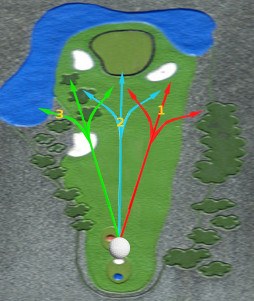
A hooked golf shot, which curves hard to the left when hit by a right-handed golfer, may seem like the mirror image of a slice.
Actually, a hook is often worse. Unlike a slice, which tends stop fairly quickly because it flies high with backspin, a hook typically comes off low and hits the ground running, magnifying the error as it bounds into trouble.
Hooks happen when the clubface is closed (pointing left) in relation to the clubhead’s path at impact. The combination creates right-to-left spin, causing the ball to curve left. Also, closing the clubface reduces its effective loft, so a wedge may actually travel as low and far as an 8-iron.
Think of a hook as the draw’s evil twin, much as a slice relates to a fade. Where a draw curves softly and finishes on target, a hook bends sharply and misses to the left. There are three different types of hooks:
Hooks are most common among experienced and skilled golfers, who swing on an inside-to-out path and fully release the hands through impact. Hooks happen when the golfer overdoes one, the other or both elements.
Practiced diligently, the drills in this series will cure you of the hooks by fixing incorrect swing mechanics.






